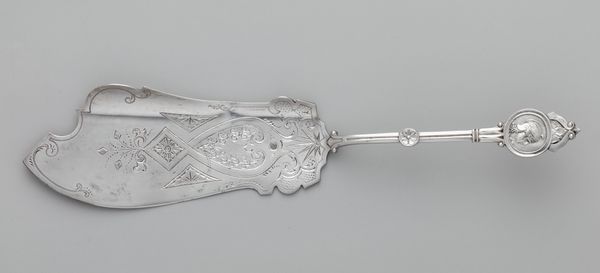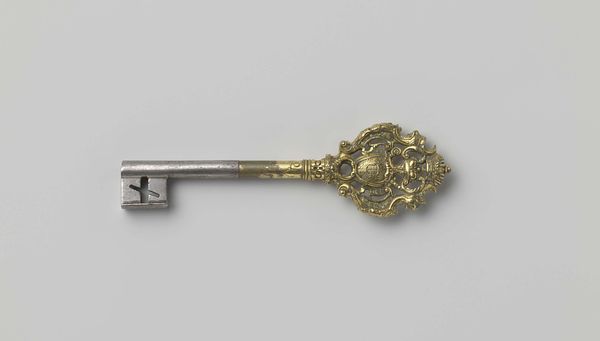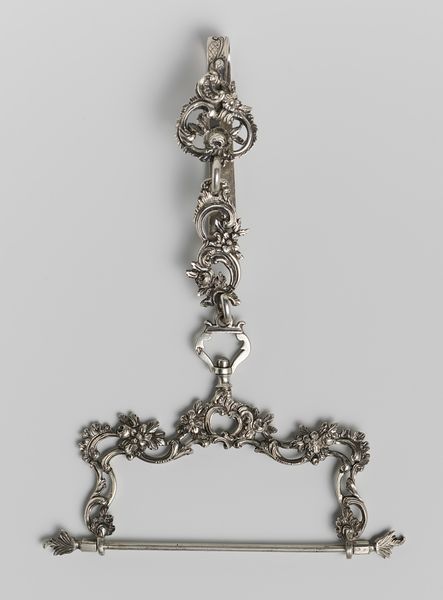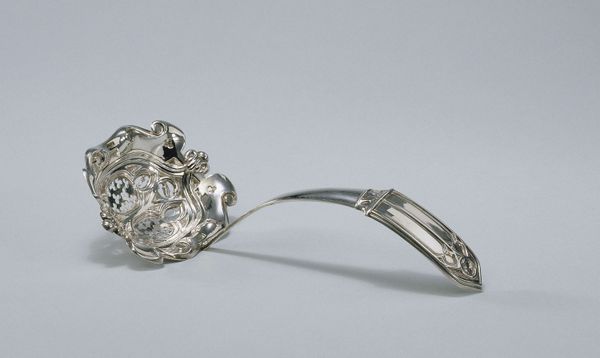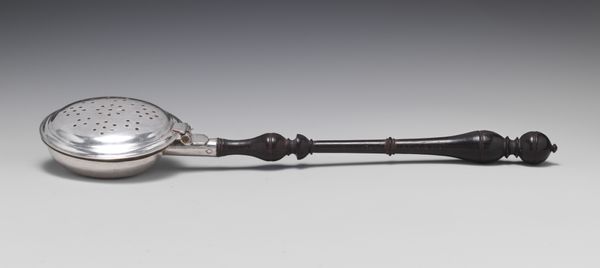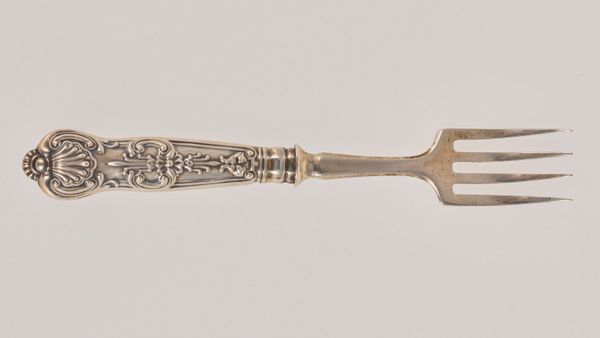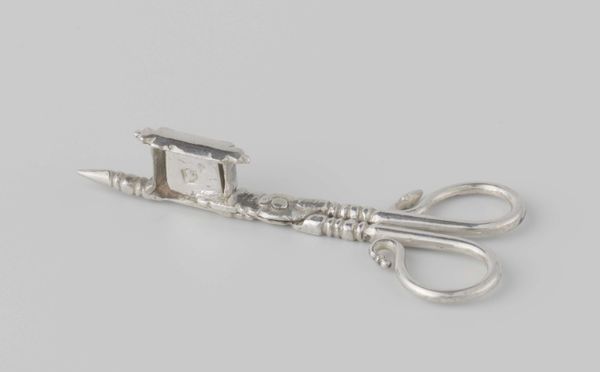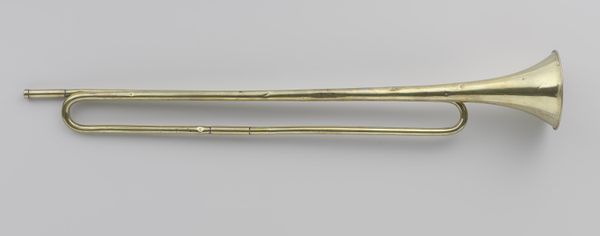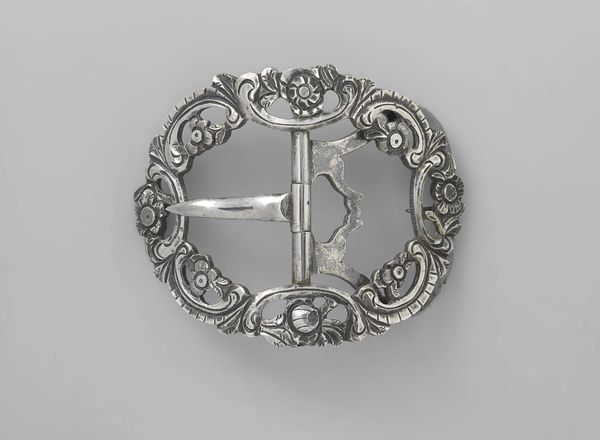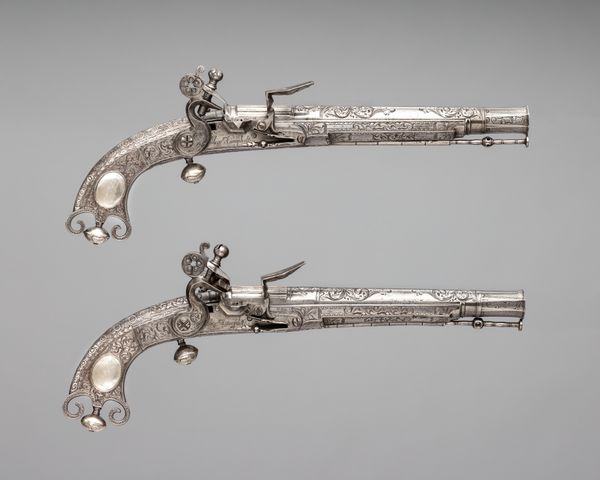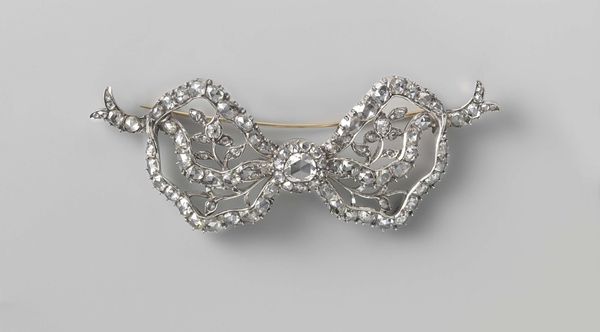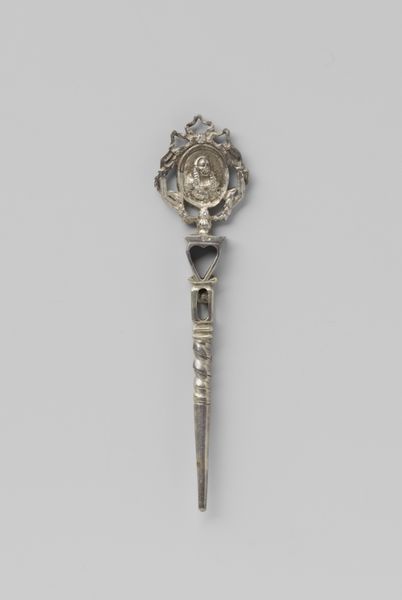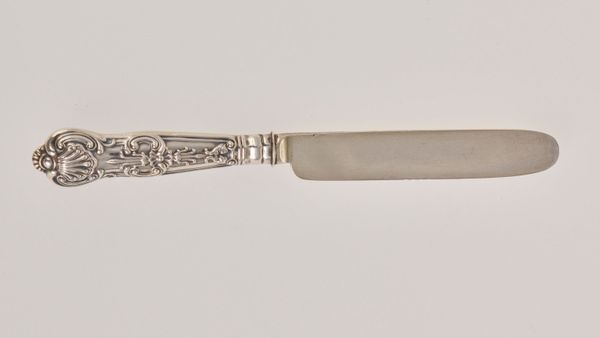
carving, metal
#
carving
#
baroque
#
metal
#
decorative-art
Copyright: Rijks Museum: Open Domain
Editor: Here we have "Key of a Tabernacle" made in 1749 by Adriaen van der Weyden, crafted from metal with detailed carving. It looks so ornate, almost like jewelry. How should we interpret a key elevated to this status? Curator: That’s a crucial point. Keys are typically functional, utilitarian. But here, the Baroque style, all that embellishment, transforms it into something more. Think about what a tabernacle *represents* in its historical context. It’s a sacred, locked space, holding objects of immense spiritual and perhaps even political power. Editor: So, the key itself becomes a symbol of authority? Curator: Precisely. Consider who held the key, literally and figuratively. Was it a priest? A noble? And what does this suggest about access, control, and the structures of power at that time? The artistry is not just decorative. It’s reinforcing a social hierarchy. Who gets access to what’s considered holy or valuable? Editor: That reframes how I see it completely. It’s not just a pretty object; it’s a statement about exclusivity. Curator: Exactly. The key *embodies* the power dynamic between those who are included and those who are excluded. Even the material choice—the polished metal—speaks to status and privilege. Does knowing that influence how you now perceive it? Editor: Definitely. It makes me consider the craftsmanship not as mere decoration, but as a tool to reinforce the existing social order. I'll never look at a key the same way again. Curator: That's the power of art. To make us question those structures, even within something as seemingly simple as a key.
Comments
No comments
Be the first to comment and join the conversation on the ultimate creative platform.
